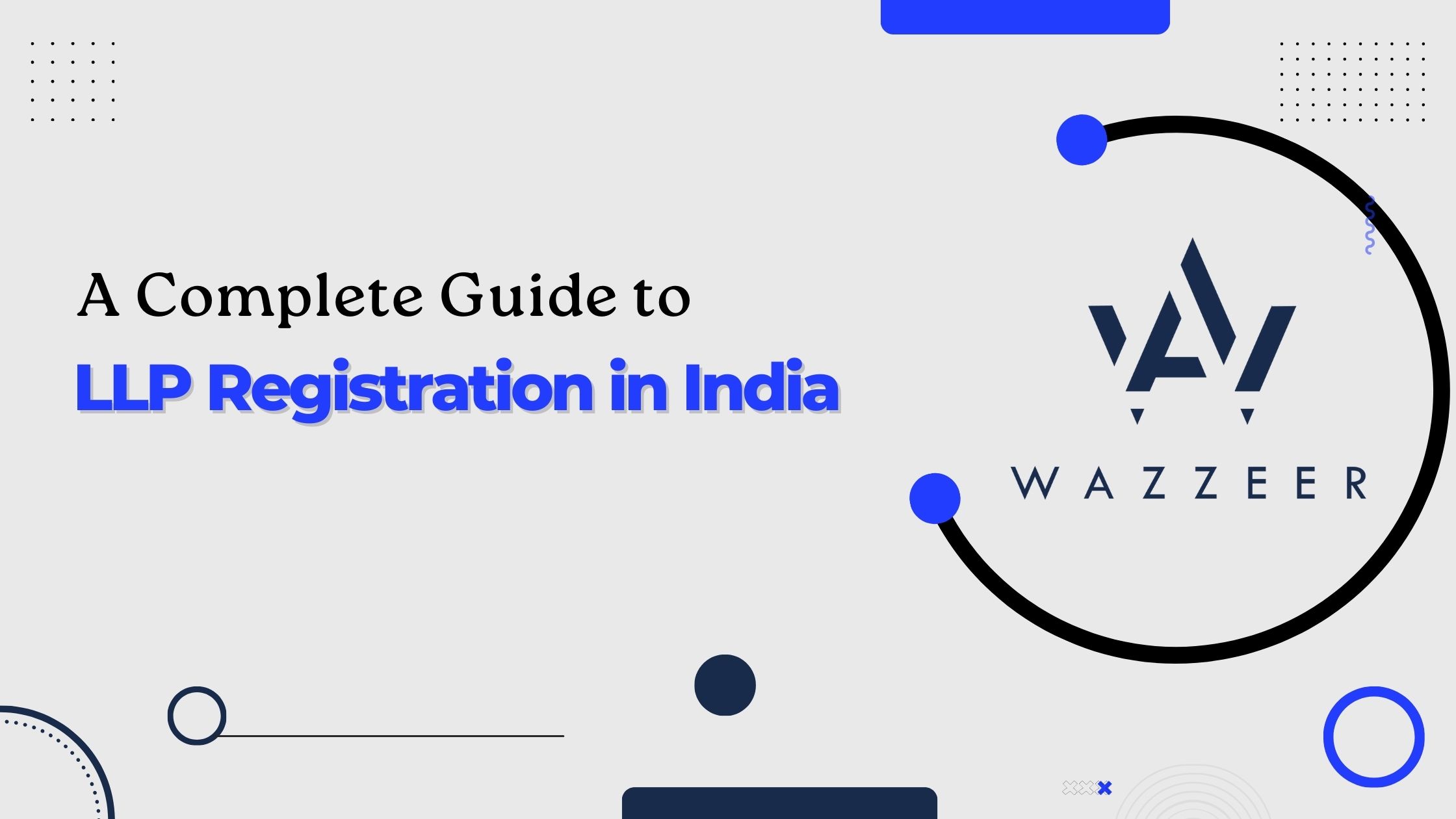Starting a business in India can be a daunting task, especially when it comes to navigating the legalities involved. One popular option for entrepreneurs is to register their business as a Limited Liability Partnership (LLP). In this blog post, we’ll break down everything you need to know about LLP registration in India, from the basics to the process itself.
What is an LLP?
A Limited Liability Partnership, or LLP, is a unique business structure that combines the benefits of a partnership with the limited liability of a corporation. This means that the partners’ personal assets are protected in case of any debts or liabilities incurred by the business.
Benefits of Registering as an LLP
- Limited Liability: As mentioned earlier, one of the main advantages of forming an LLP is that the personal assets of the partners are not at risk in case the business faces financial difficulties.
- Separate Legal Entity: An LLP is considered a separate legal entity from its partners. This means that it can own property, enter into contracts, and sue or be sued in its own name.
- Flexible Management: LLPs offer flexibility in terms of management structure, allowing partners to agree on how the business will be managed.
Documents Required for LLP Registration
When registering a Limited Liability Partnership (LLP) in India, certain documents are required to be submitted to the Ministry of Corporate Affairs (MCA). Here’s a comprehensive list of the documents you’ll need:
- Identity Proof: Each partner must provide a copy of their PAN card (for Indian nationals) or passport (for foreign nationals).
- Address Proof: Similarly, partners need to submit a copy of their Aadhar card, driver’s license, passport, or voter ID card as address proof.
- Passport-sized Photographs: Recent passport-sized photographs of all partners are required.
- Proof of Registered Office: Documents such as rent agreement or sale deed along with utility bills (not older than two months) must be submitted as proof of the registered office address.
- LLP Agreement: A legally binding LLP agreement outlining the rights, duties, and obligations of partners must be drafted and signed by all partners. This agreement should be stamped as per the Stamp Act.
- DPIN Application: Application for Designated Partner Identification Number (DPIN) for all partners.
- Digital Signature Certificate (DSC): Each partner must obtain a Class 2 Digital Signature Certificate.
- Consent to Act as Partner: Consent of each partner to act as a partner in the LLP.
- Subscription Sheet: Subscription sheet signed by all partners.
- Statement of Assets and Liabilities: A statement declaring the solvency of the LLP signed by the designated partners.
- Approval Certificate: If the proposed name of the LLP contains any word(s) or expression(s) which require approval from a regulatory body or is a trademark, then approval or NOC (No Objection Certificate) from the concerned regulatory body or trademark owner must be submitted.
- Declaration: Declaration by the partners stating that all requirements of LLP registration have been complied with.
These documents play a crucial role in the LLP registration process and must be accurately prepared and submitted to the MCA. It’s advisable to seek professional assistance to ensure all documentation is in order and compliance requirements are met.
By preparing and submitting the required documents diligently, you can streamline the LLP registration process and establish your business with confidence.
LLP Registration Process
Now that we understand the basics, let’s delve into the process of registering an LLP in India.
Step 1: Obtain Digital Signatures
The first step in the LLP registration process is to obtain digital signatures for all the proposed partners. This is necessary as all documents filed with the Ministry of Corporate Affairs (MCA) need to be digitally signed.
Step 2: Obtain Designated Partner Identification Number (DPIN)
Next, each partner must obtain a Designated Partner Identification Number (DPIN) by filing an application with the MCA. This is similar to a Director Identification Number (DIN) required for directors of a company.
Step 3: Name Approval
Once the DPINs are obtained, the partners need to decide on a suitable name for the LLP and check its availability with the MCA. The name should comply with the LLP Act, 2008, and should not be similar to any existing LLP or company name.
Step 4: File Incorporation Documents
After obtaining name approval, the partners need to file the incorporation documents, including the LLP agreement, with the MCA. This should be done within 60 days of name approval.
Step 5: Certificate of Incorporation
Once the documents are filed and verified by the MCA, they will issue a Certificate of Incorporation, officially recognizing the LLP as a legal entity.
Conclusion
In conclusion, registering as an LLP in India offers several advantages, including limited liability and flexibility in management. By following the steps outlined in this guide, you can navigate the LLP registration process with ease and start your business journey on the right foot.
Remember, if you need assistance with LLP registration or any other legal, accounting, or compliance services, Wazzeer is here to help. Our team of experts can guide you through the process and ensure compliance with all regulatory requirements.
So, whether you’re a budding entrepreneur or an established business looking to expand, consider registering as an LLP for a secure and flexible business structure.
